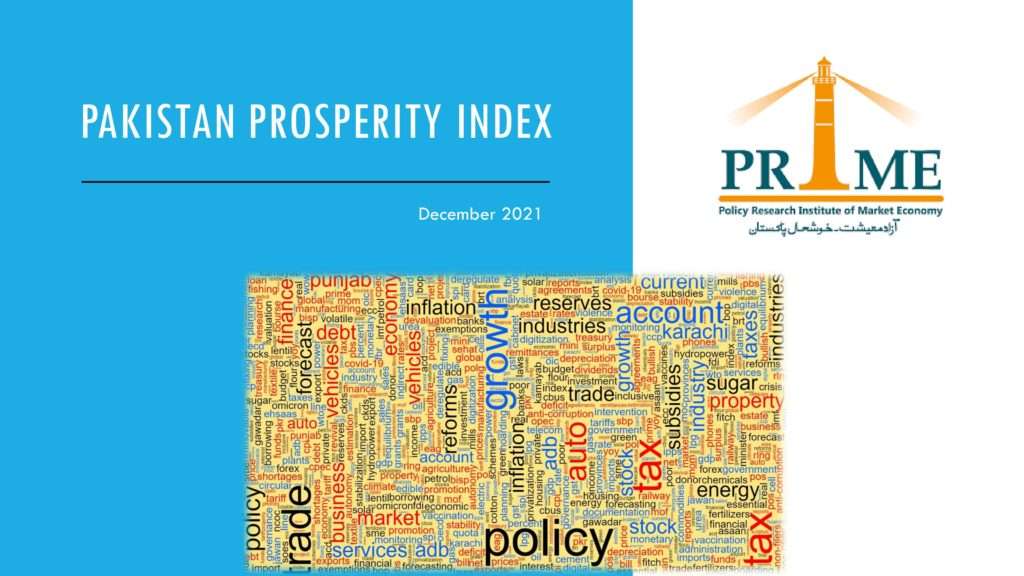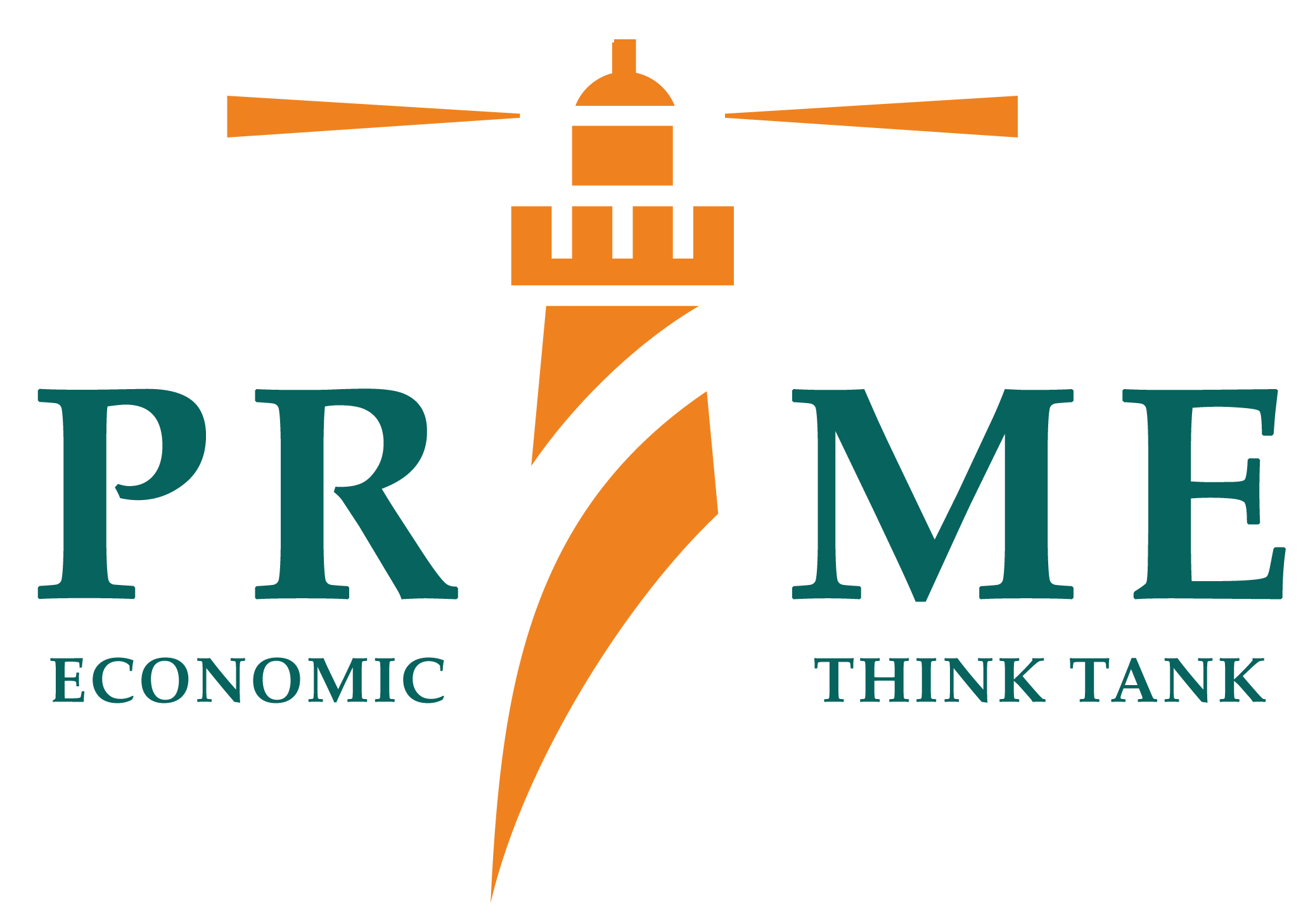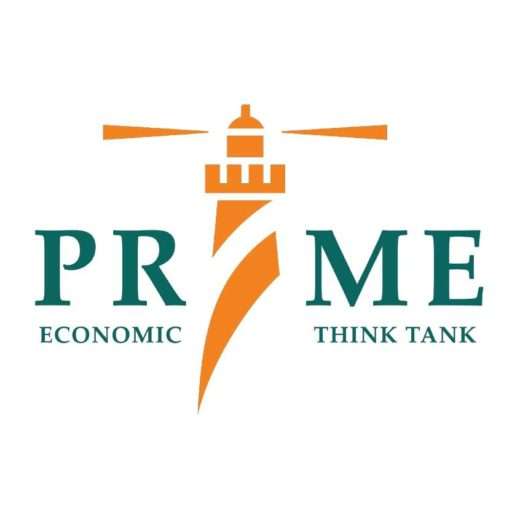Pakistan Prosperity Index – December 2021
Economic prosperity improves amid rising energy constraints

Over November 2020-October 2021, economic prosperity has improved by 1.5%, according to PRIME’s latest report Pakistan Prosperity Index. The improvement in overall country’s economic performance can be attributed to higher business activity on the back of rising domestic and international demand of goods and services, decline in supply chain distortions and return to normalcy.
The trade volume witnessed an increase of Rs.538 billion Y-o-Y and Rs.3.8 billion M-o-M on account of an increase in domestic and international demand. In M-o-M trade growth, exports witnessed an increase Rs.19 billion, while imports witnessed a decline of Rs.15 billion in October 2021.
Purchasing power continues to decline as the Y-o-Y inflation was reported at 9.2%, while the M-o-M inflation clocked at 1.9%. The prevalent high levels of inflation are due to soaring supply-demand gap emanating from monetary expansion carried out through commercial banks’ investment in government securities, higher inflow of remittances, falling productivity and surging petroleum prices.
Large Scale Manufacturing (LSM) output posted a growth of 1.9% M-o-M, while a decline of 1.2% Y-o-Y. The slowdown in manufacturing activities on yearly basis is due to significant increase in the energy and input prices while monthly increase is associated with rising demand. The automobile industry maintains leading position with the growth of 1.2% while textile and food industries having weightage of 21% and 12% showed growth of 0.1% and 0.4%.
The private sector borrowing from banks has been on an upward trajectory with Rs.197 billion Y-o-Y and Rs.19 billion M-o-M increase. The borrowing continues to increase despite slight hike of 25 basis points in policy rate and indication of further hike in coming months. However, the borrowing is likely to slow down after recent hikes in the policy rate.
The economic performance is encouraging but caution is needed due to prevalent challenges. The burgeoning current account deficit on the back of significant increase in the international commodity and energy prices and the resultant hike in the policy rate will contribute to slow down in the economic activities in the country. This is cardinal factor in the yearly decline in manufacturing sector output.
The surging global energy prices translates into domestic inflation thus declining the purchasing power/real incomes of the citizens and hinders the economic activity. Instead of relying on administrative measures to control prices, addressing the supply side bottlenecks such as lower productivity and interruption in the supply of energy are imperative to lower inflation, especially food inflation, which is the main cause of rising overall inflation in the economy.
The overall economic outlook, as measured by PPI, shows improvement and supports the government’s growth targets. The supply side shocks call for more liberal trade measures and elimination of state intervention in the market. Moreover, prudent economic planning is needed to curtail fiscal deficit.
PRIME Institute publishes monthly PPI report with a lag of two months due to availability of data, which comprises trade volume, lending to private sector, purchasing power and manufacturing output indices.
Click Below to read full Report & Methodology:
For inquiries, please contact afzal@primeinstitute.org or call at 03330588885.


